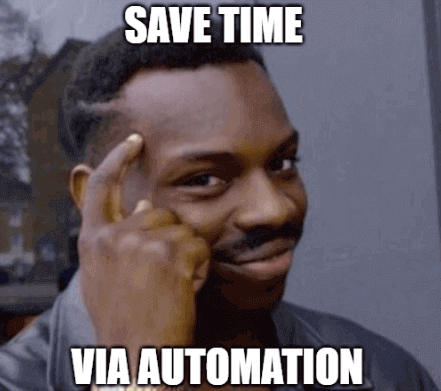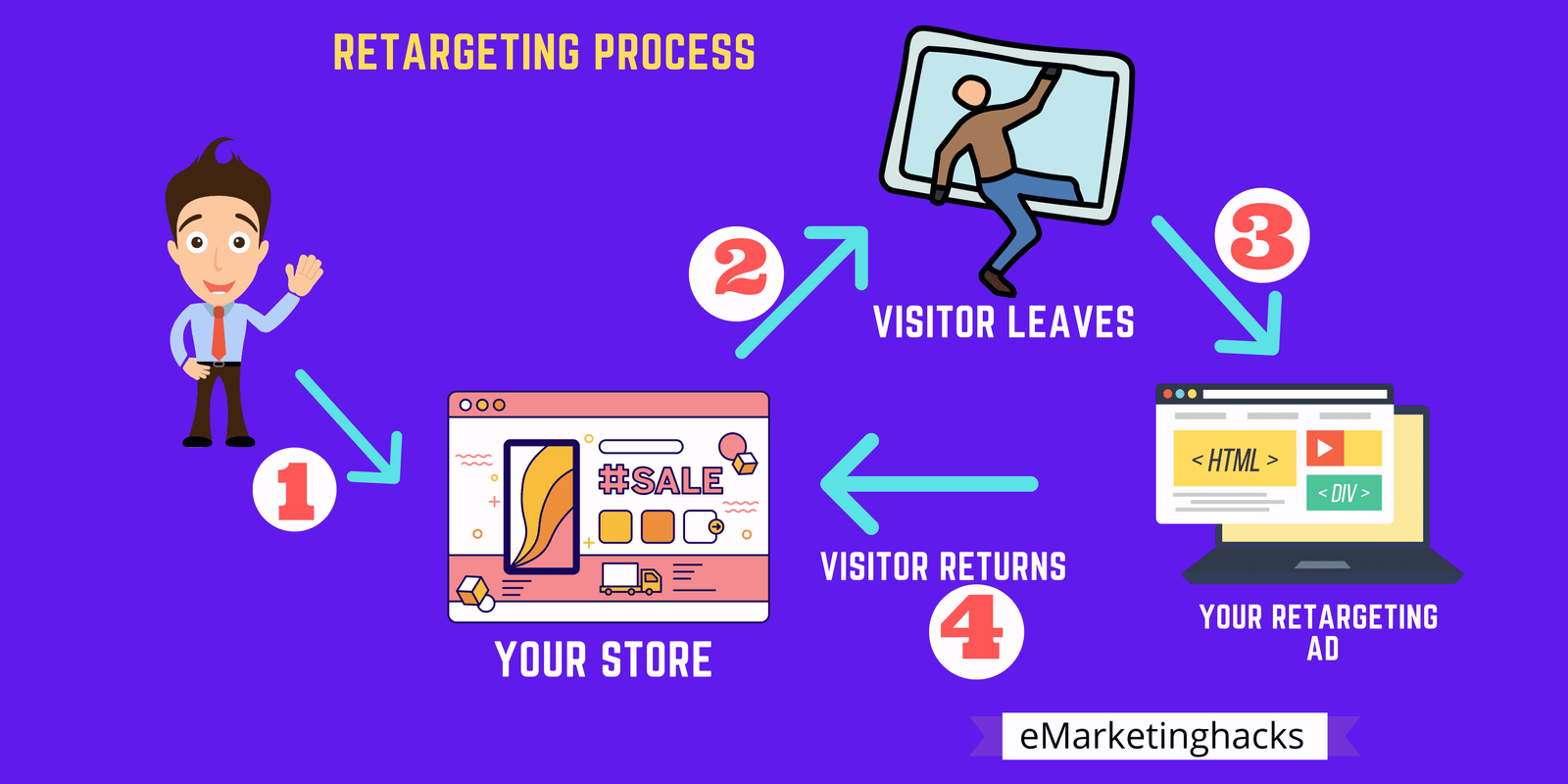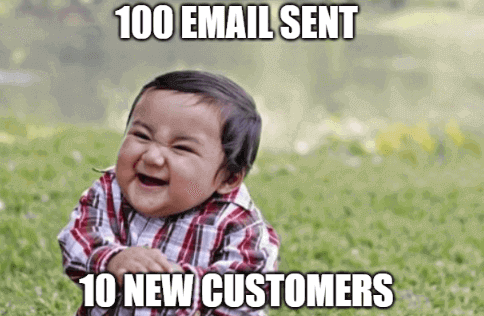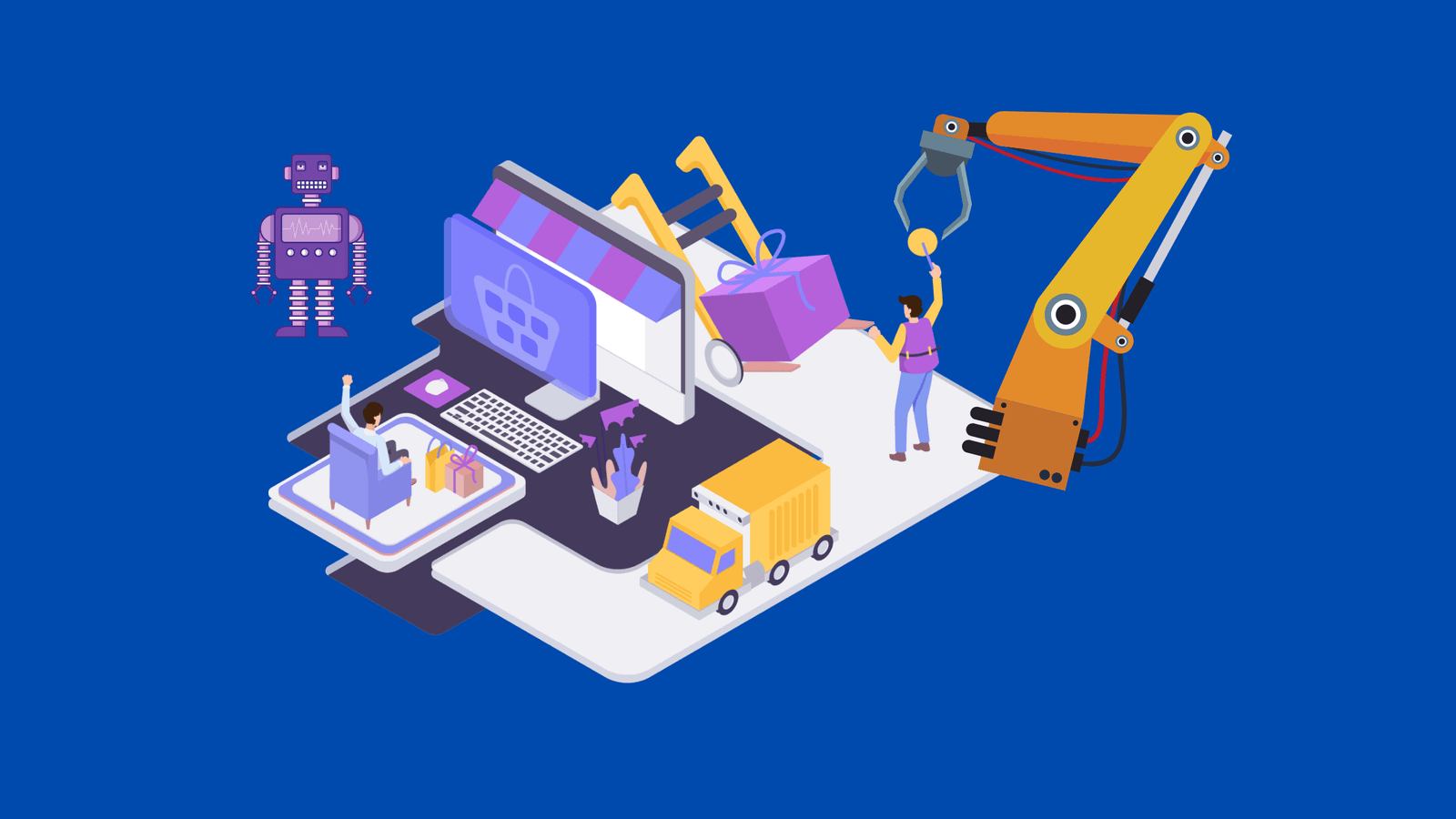What is Dropshipping Automation?

If you have been in the dropshipping business, you understand that there are many tasks involved, and now that you are running the business alone or have a small team, these operations might overwhelm you. This is where automation comes in.
Benefits of Dropshipping Automation
Is automating your dropshipping business a worthy undertaking? Well, the answer is yes. Below are three benefits of dropshipping automation.
1. Saves Time

As mentioned above, managing a dropshipping business involves dozens of operations that take a lot of time.
You have to do product research to give you insights on what are the best dropshipping products to sell.
You also have to create product listings, update stocks, adjust prices, order products from suppliers, and, importantly, offer customer service. What's more? You have to market your business.
With automation, you can save a lot of time that could have otherwise been spent on repetitive and mundane marketing tasks.
2. Cut Costs
Automating your dropshipping business also cuts costs. According to a KPMG publication dubbed Rise of the Robots, robotic process automation can cut costs by up to 75%.
This is the same case in the management of dropshipping businesses and eCommerce in general.
With dropshipping automation, you won't need to spend money on extra employees as the business is on autopilot.
3. Optimization and Risk Mitigation
The best part about dropshipping automation, especially if you use technology, is optimization and risk mitigation.
Technology helps dropshipping businesses to optimize all critical operations.
For example, dropshipping tools will give you key insights and analytics on sales and the efficiency of marketing campaigns so you can know the direction your business is taking.
Importantly, automating dropshipping business reduces the risks of human errors.
How to Automate Your Dropshipping Business
Now, onto the main business of the day, how do you automate your dropshipping business? Well, there are two ways.
You can opt to leverage human resources - virtual assistants or technology - dropshipping software and other related SaaS products..
Hiring freelancers to help you manage your dropshipping business is a great option now that they will take care of all the operations involved.
This way, you can concentrate on other activities or have enough time for a vacation while your dropshipping business is up and running.
The downside of this method, however, is the related costs of hiring someone. Besides, you have to be very keen on the hiring process.
Unfortunately, many quacks on freelancing sites claim to be gurus in managing drop shipping businesses, yet they are inexperienced.
The best way to automate your dropshipping business with minimal costs is by adopting technology. Dropshipping automation software such as Easync or others can do the tasks of an entire team, and subscriptions are affordable compared to hiring employees.
How to Automate Your Dropshipping Business With Minimal Costs
As a smart entrepreneur, the best way to automate your dropshipping business is by leveraging technology.
It is less costly, and importantly, efficient. In the long run, you will be able to scale your dropshipping business to the next level.
So, how do you automate your dropshipping business using technology?
Well, dropshipping automation software is the answer.
These tools have been engineered to automate three crucial aspects of your dropshipping business; Sales, Inventory Management and Marketing.
Related: Top 42 Dropshipping Tools You Should Consider Using.
1. Sales Process
The secret to the success of your dropshipping business is automating the sales process, which involves lots of activities.
According to McKinsey & Company, 30% of sales activities can be automated. In this segment, find out how you can automate the sales process of your dropshipping business.
(i) Automate Product Research
Product research can be the deal maker or breaker in dropshipping. Don't just sell anything; find a product that will sell. You don't want to have a huge inventory but no sales.
Now, the elephant in the room is doing product research. You need to find trending products on Google trends, do thorough competitor product research, research product videos on Facebook, join online communities, and so on.
Now, doing all the above tasks manually is hectic and takes a lot of time. But, the good thing is that you can automate product research.
Product research tools do all the heavy lifting. They give dropshippers insights on the best-selling products. These tools like ecomhunt sort products automatically by the product's sell rate, competition, sale price, margins, etc.
(ii) Automate Product Listing and Listing Optimization
Now that you have a list of the best-selling dropshipping products, the next hurdle is listing them. As you may be aware, there are millions of dropshipping products. But for many dropshippers, listing products is a big deal.
Manually uploading products to your store can take forever, especially if you have thousands of products. Yes, there are sites where you can get freelancers to do the dirty work for you ( not all ) , but it can be costly if you have thousands of products to sell.
The solution here will be automating the product listing process.
There are many dropshipping lister software out there that let you upload products in just a few clicks, example Oberlo. You can add the product name, description, and images effortlessly.
Besides, some tools will help you enhance all the product images.
As you may be aware, product images should be uniform for consistency, but if you have multiple suppliers, the images will be different in terms of sizes, quality, background, etc.
As a smart dropshipper, you will have to enhance these images for consistency.
If you are in this boat, the good news is that you don't have to hire designers to get the job done; go for dropshipping tools with image enhancement features.
Besides automating product listings and enhancing product images, there are software that can optimize the listings for visibility. Others have options to schedule when you want the products to go live.
(iii) Automate Order Processing
Dropshipping is a great business model now that you don't have to own the inventory. Instead, your role is to market products and get orders. Once you get an order from a buyer, you will have to order the product from your supplier.
When you are just starting, you probably have a few orders, so processing orders from the supplier's side is not a big challenge.
But what if your business has blossomed, and now you have hundreds of orders to process daily. This automatically becomes a challenge now that you have to process orders manually.
If you are getting many orders, the solution is to automate order processing. With dropshipping automation software, you can create templates that export sales orders from your end and forward them to the supplier.
Once you have set the rules, the order processing is now on autopilot. There are also advanced tools that sync your site with that of the supplier via APIs.
Whatever order is placed in your store is automatically ordered from the supplier's store.
With order processing on autopilot, you now have more time to focus on other areas of business.
(iv) Automate Order Tracking
While your supplier handles the packaging and delivery, it's your responsibility to ensure that orders are shipped on time and your customers are furnished with information on the status of their orders.
According to statistics, 83% of shoppers expect regular and precise information regarding their orders.
Interestingly, 53% of shoppers won't purchase if they don't know when their order will be delivered. That said, order tracking should be a concern if you want to grow your brand.
Now, the problem is, tracking orders manually and updating your customers. It can be a painstaking operation, especially when you have hundreds of orders.
Going through the orders manually and reverting the order status to customers is time-consuming.
The worst thing is that customers will ever be on your case trying to figure out when their orders will arrive.
Fortunately, dropshipping tools can help you automate order tracking. They can send customized emails to your buyers.
The email contains order tracking numbers and a link that can help them follow the package's journey.
This way, you can reduce the number of inbound calls and messages from customers. Plus, you win the hearts of the 83% of shoppers who expect constant communication throughout their purchase journey.
2. Inventory Management
One of the best reasons to start a dropshipping business is that you don't need to have the capital to buy inventory.
Besides, dropshippers don't incur warehousing costs. However, they must manage their inventory lest things start going haywire.
Inventory management is all about managing product stock, product cost, and, importantly, margins.
In this section, we have tips on how to streamline inventory management using automation.
(i) Automate Stock Updates

One of the reasons many drop shippers fail is the lack of efficient stock management practices. Nothing sucks like getting an order for an item only to find out that the supplier doesn't have the item in stock.
This means you will lose the hard-earned sale. Also, your brand loses now that you won't fulfill the order.
To run a successful dropshipping business, you need to stay on top of the supplier's stock. But then, this can be a challenge if you are doing it manually and you have many products.
Even if you have the resources to update stocks manually, you will still not have the correct figures as suppliers have many sales channels, so what might be in stock today may be depleted tomorrow.
Your stock should be updated regularly to avoid any inconveniences that may lead to order cancellation because of out-of-stock products.
Your store's stock should reflect what is in stock at your supplier's warehouse. It's also essential to monitor sales trends to forecast demand.
Now that stocks should be updated regularly, automation is the ultimate solution. Luckily, there are plenty of dropshipping tools that will help you automate stock updates. The tools sync with the supplier's platforms via APIs.
Whenever an item runs low or runs out entirely, you can tell the system on your end what to do.
Besides APIs, you can choose to request CSV files of stock updates and update the stock on your store with just a few clicks. There's also the option of custom scripts, but these should be the last solution because of the high costs of hiring programmers.
(ii) Automate Price Updates
Besides stock, pricing is another important aspect of your dropshipping business. Just like stock levels, the price of items changes with time.
An item that costs $45 today may attract a higher or lower cost tomorrow. That said, it's important to update pricing to meet the supplier's pricing at any given time.
You don't want to sell items at the regular price when the supplier has already hiked their prices. This will reduce your margins, something that is not good for business.
In the same token, you should be lowering your prices when the supplier has lowered them to keep up with your competitors.
But just like with stocks, manually monitoring prices and adjusting them where necessary is a daunting task that takes a lot of time. What's more? Pricing requires high levels of accuracy.
You don't want to mess with prices. So, what's the solution now that your prices need to be accurate and you have thousands of products? Well, the answer is automating price updates.
The best dropshipping software have pricing and repricing features.
These tools will find the lowest prices of items offered by suppliers, so you remain competitive in terms of pricing. What's more?
They can be synced with your suppliers' sites to update prices based on your set percentage margins. Importantly, they eradicate any chances of human error.
3. Marketing
While you don't have to worry about inventory and order fulfillment in the dropshipping model, there's everything to worry about in marketing your business.
To succeed in dropshipping, you need to market your business on multiple channels, which means more resources.
As a savvy entrepreneur, you need to leverage technology and the ever-growing marketing strategies for your dropshipping business to be successful.
According to Social Media's Today 2019 State of Marketing Automation Survey report, 75% of all companies already use at least one kind of marketing automation tool.
In addition, data from Invespcro. also shows that 63% of marketers will be increasing their marketing automation budgets soon.
These two key statistics tell you why you need to join the marketing bandwagon if you have a dropshipping business.
Automating all your marketing has several benefits, including efficiency, alignment of marketing and sales, accurate reporting, and higher ROI.
In this third segment of this dropshipping guide, find out clever ways of automating your dropshipping business.
(i) Set Up Retargeting

Let's face it, in as much as retargeting, otherwise known as remarketing, is shunned by many customers, it is one of the best ways of marketing your dropshipping business.
Statistics show that the average click-through rate (CTR) of retargeted ads is around 0.7%, while display ads have a CTR of just 0.07%.
The above statistics tell you that it's better to invest more in retargeted ads than display ads.
But then, the strength of retargeted ads is not just about the click-through rates; how they work is the most important thing.
Retargeted ads, unlike display ads, are automated. You only have to set retargeted ads, and the algorithm will do the rest for you.
When a buyer visits your store and abandons the cart, ads with the products in the abandoned cart are retargeted to other sites they visit with the intent of persuading them to buy the product.
While setting up retargeted ads can be challenging for non-techie dropshippers, it's a simple, straightforward, and one-time process.
For example, setting retargeted ads on Facebook requires the installation of a Facebook Pixel on your store - it's that simple!
(ii) Automate Facebook Ads
There's no doubt Facebook ads are the best for dropshipping businesses. While it is rivaled by Google ads, it still has better conversion rates than Google ads.
Facebook ads show users ads based on their interests and offer more nuanced targeting and powerful tracking insights. When it comes to numbers, Facebook ads have an average conversion rate of 9.21% across all industries.
But then, running Facebook ads is quite a cumbersome undertaking now that you need to test and check each ad frequently for optimization where necessary.
For example, you need to adjust your ads budget, locations, and target audience to get the best results.
All these activities may consume a lot of time that you can otherwise dedicate to customer service or your other businesses.
The good thing is that Facebook ads can be automated. You can opt for Facebook's ads automation tool or a third-party ads automation tool.
The advantage of Facebook ads automation tools is that they save you a lot of time. They can create and execute ads automatically.
What's more? They have machine learning capability, which helps them constantly learn from the previously created ads and optimize results for better ROI.
(iii) Automate Social Media Posting
Social media is among the best channels to market your dropshipping business.
According to statistics from Buffer’s State of Social 2019 publication, 73% of marketers believe that their social media marketing efforts have been "somewhat effective" or "very effective."
That said, this is a must-have marketing channel that can scale your dropshipping business and increase sales.
One of the time-consuming activities when leveraging social media to market a dropshipping business is posting.
To keep your audience engaged and informed about the value of the products you are selling, you need to post frequently and on a regular schedule.
But what if you don't have all the time in the world to post on your social media channels? Well, automating social media posting is the answer.
There are plenty of social media management tools, for example, Hootsuite, that can help you automate posting. All you have to do is find time to schedule posts for all your social media channels, and the tool will handle the rest.
(iv) Automate Email Marketing

Email marketing is one of the most effective marketing channels in the eCommerce field.
29% of marketers rate email as the most effective marketing channel, while 72% of customers prefer email as the primary channel in business communication.
Emails have incredibly high ROI and are the best for lead generation, customer loyalty, and retention.
But then, executing a successful email marketing campaign can be a treacherous activity now that you have several other critical operations to take care of.
So, what do you do now that email is an effective channel for promoting your dropshipping business and, importantly, communicating with your customers? Here again, the answer is automation.
There are plenty of email marketing automation tools dropshippers can use to send personalized messages to prospects and existing customers.
The emails can contain promotional materials with your store's best-selling products or discounted items.
Besides, you can create automated emails with triggers such as sign-ups, order confirmation, back in stock, refunds, canceled orders, delivered orders, and so on.
With email automation, you don't have to draft and send all these emails manually. Instead, there are tools that do the heavy lifting for you.
To fully tap into the power of email marketing, you need a rich email list. Statistics show that there will be over 4.3 billion active email users by 2023, and 293.6 billion emails are sent and received every day.
Email marketing is suitable for your dropshipping business. But then, there are lots of repetitive tasks in the email collection and email list cleaning processes.
But thanks to email marketing tools, you can now automate most of the tasks in your email marketing calendar.
For example, there are tools for automating your email capture and email collection efforts. And it's not just email collection; you can also automate email list verification so your list remains healthy always to lower bounce rates and improve ROI.
With a long list of quality emails, your lead generation is firing on all cylinders.
Interestingly, automatic emails are not just for the buyers; you can also use them to manage your seller center. Install a desktop notification system to alert you on urgent prompts, for example, an order, delivery, payment, etc.
(v) Automate Your Social Proof Strategy
There's no doubt social proof is among the most innovative ways of boosting brand reputation, and ultimately, revenue. Statistics show that social proof tools can boost conversions by up to 15%.
But then, implementing an effective social proof strategy is also time-consuming and involves those tedious, repetitive tasks.
But thanks to automation, you can set up that winning social proof strategy and tap into this new trend of growing sales.
Go for tools such as review apps that automatically ask your customers to review your service after receiving their orders. Statistics show that 88% of consumers trust user reviews just as much as personal recommendations from a friend or family.
Sales and pop-up ads are also integral in the anatomy of a successful social proof strategy. Whenever an item is purchased, a pop-up is displayed somewhere below the screen.
Automating your dropshipping business is the ultimate way to scale your dropshipping business and make it profitable.
Automation streamlines all the operations, starting from the sales processes to inventory management and even marketing.
So, if you are a visionary online entrepreneur who wants to start generating passive income, think of starting a dropshipping business and plan how to automate it.
Wrapping Up
There you have it, folks, the ultimate guide on how to automate your dropshipping business with minimal costs.
As explained earlier, there are two ways to automate your business; hiring freelancers and virtual assistants to do the work for you or leveraging technology.
The former does automate your business, but it is not cost-friendly.
So the ultimate way to run a dropshipping business while cutting costs and saving time is by adopting technology.
But remember, while automation does most of the work, your input is always needed whenever necessary - it's not possible to fully automate a dropshipping business.
Further readings :
